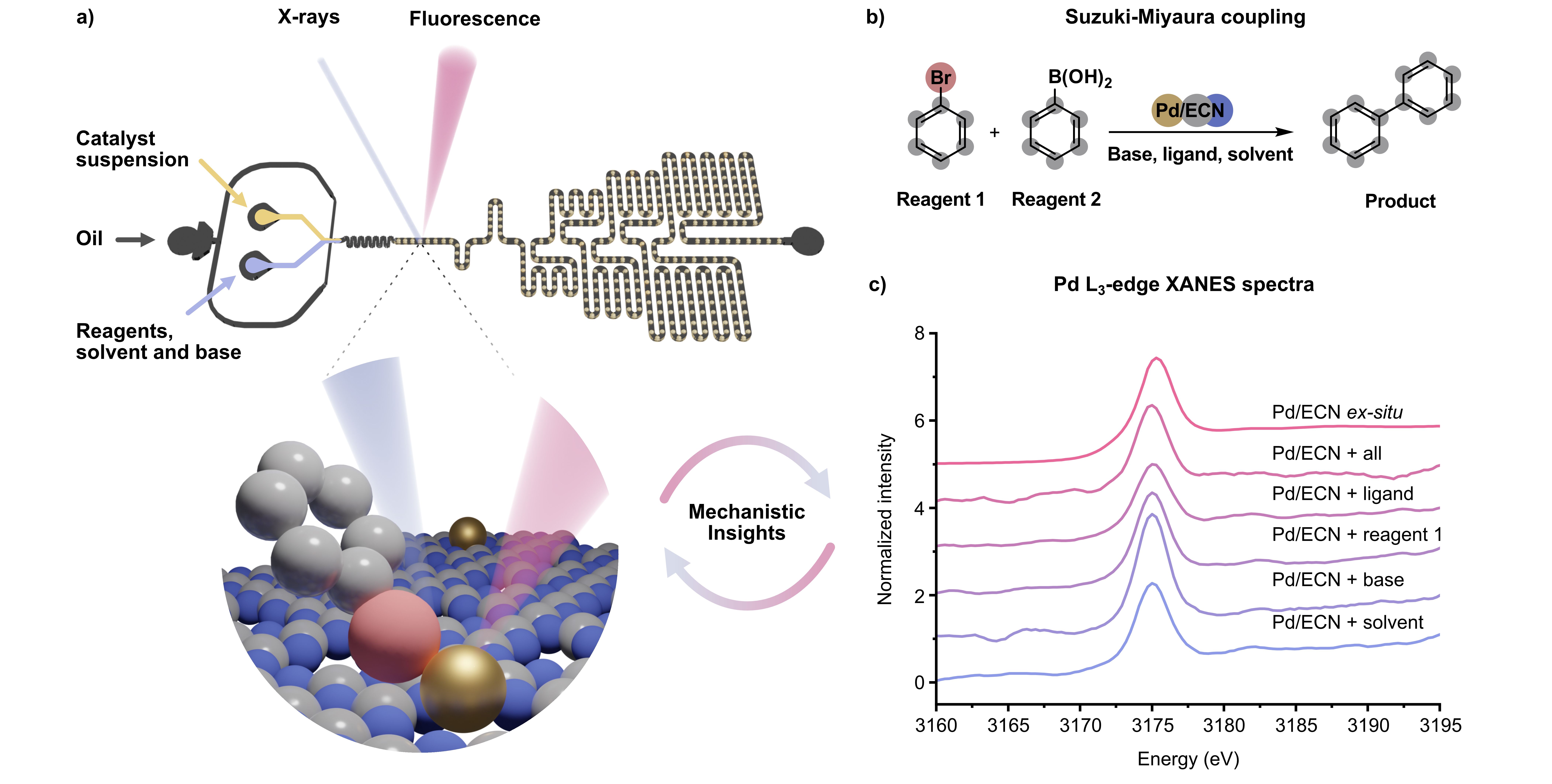Droplet-based microfluidic platform for operando X-ray absorption spectroscopy of single-atom heterogeneous catalysts in organic synthesis
Single-atom heterogeneous catalysts (SACs), bridging the gap between the homogeneous and heterogeneous approaches, have recently emerged as a promising alternative for catalyzing organic reactions.[1] That said, very little knowledge exists about the catalytic cycle of reactions on supported catalysts. This is because unlike organometallic catalysts, for which a plethora of characterization techniques is employed to gain a better understanding of the catalytic cycle, in-situ and operando tools for heterogeneous catalysts, including SACs, are limited. As such, mechanistic insights largely rely on density functional theory (DFT) calculations and still lack experimental validation.[2] This study introduces a droplet-based microfluidic platform suitable for operando X-ray absorption spectroscopy (XAS) of SACs. The strategy relies on safely flowing catalyst suspensions of precisely tuned size in droplet-based microfluidic systems (Fig. 1a).[3] The encapsulation of the particles within the droplets, which act as isolated reactor vessels, prevents clogging and enables time-resolved operando measurements. In this study, the Pd L3-edge and K-edge of palladium on carbon nitride (Pd/ECN) SACs are investigated under Suzuki-Miyaura reaction conditions (Fig. 1b). Notably, we demonstrate the importance of performing in-situ XAS by evidencing the differences in Pd L3-edge X-ray absorption spectroscopy near edge structure (XANES) obtained during operando and ex-situ measurements (Fig. 1c). Most importantly, we lay a vital foundation for advancing the mechanistical understanding of liquid-phase organic syntheses catalyzed by SACs.

Fig. 1a Schematic of the channel pattern and operation principle in the droplet-based microfluidic device. Time-resolved XAS measurements can be acquired for increasing residence times. b Schematic of the studied Suzuki-Miyaura coupling catalyzed by Pd/ECN heterogeneous SAC. c Pd L3-edge XANES spectra acquired in the microfluidic device for various reaction conditions.